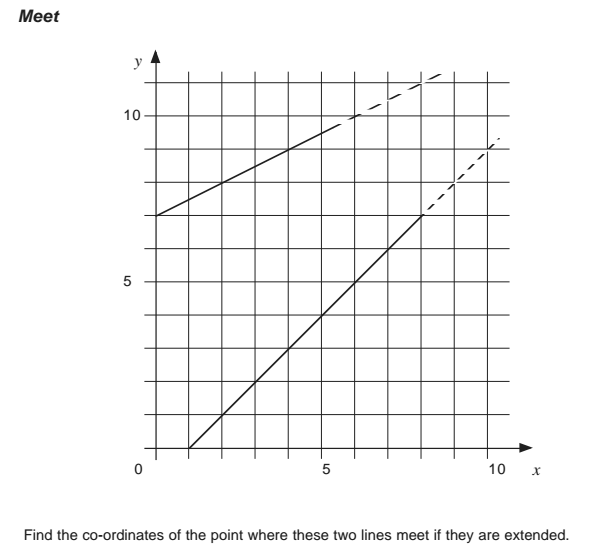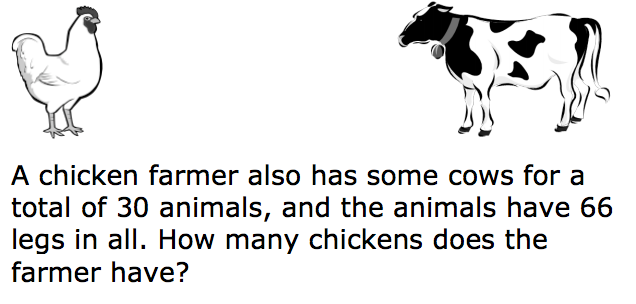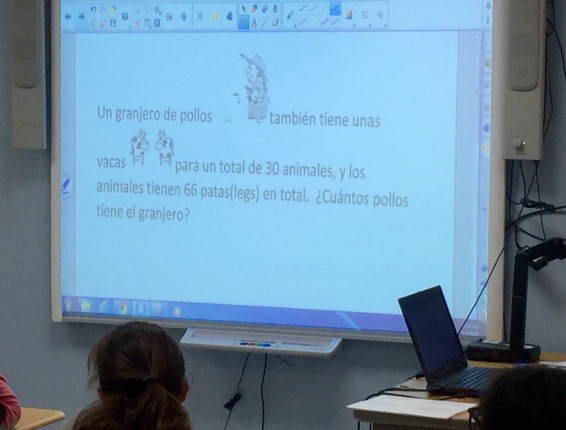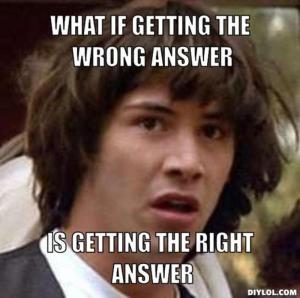I was inspired to coordinate the Intentional Talk book study this summer by a conversation between Tracy Zager and Dylan Kane.
The Intentional Talk book study began in June with various people taking the lead–including the authors of the book Elham Kazemi and Allison Hintz.
This week, Allison Hintz posted a question that lead to a conversation about effective vs efficient strategies. I tried to capture my current wonderings in this 140 character tweet:
At the end of this past school year I came across this task.

I worked with on-level 8th grade students this year, but as the school Instructional Resource Teacher, I spoke with our 7th Accelerated teachers and Algebra 1 teacher to see if they would be on board with giving this task to each of these cohorts. All of the students had been taught systems of equations this year–but notice how unstructured and simply worded this task is. I wondered what sort of strategies the students (at all of these various levels) would apply towards getting a solution for this task. We used it to gauge the sort of student that would be appropriate for a 45 minute algebra class vs a 90 minute algebra class.
The range of approaches was very interesting to me.
The following examples are from the 8th grade students that I worked with…I organized these student responses in the sort of continuum that occurred. (Interestingly, the 7th accelerated and the Algebra 1 students didn’t have too dissimilar a range of solution strategies.)
Students that chose graphing…
 Student 1: extended the lines but without precision or using any tools
Student 1: extended the lines but without precision or using any tools
Student 2: asked for a ruler in order to extend the graph in a more precise fashion
Student 3: asked for graph paper and created a graph using discrete points
Students that chose tables…

Student 4: created two separate tables beginning at x = 0 and found the values that represented the intersection point
Student 5: created a single table beginning at x = 10. This student did not pull the correct information from graph to begin the table.
Students that wrote a one-variable equation…

Student 6: wrote each linear equation and then used the substitution method to find the solution. This student did have difficulty at the end because she struggled with what to do with (1/2)x = 8. She eventually made sense of that part.
Student 7: was able to use the substitution method to write the one-variable equation as well. This student is not your typical top student and she was able to easily handle .5x=8. I asked her if she used the calculator (which I had allowed) because she didn’t get stuck like a few other of the “smart” kids. She said that she knew it took two groups of .5 to make 1 so she multiplied 8 by 2 and got 16. It was amazing to me how it was so easy for her to flip to ratio reasoning when that last bit was a challenge for some of the “top” students.
This all leads me back to my original wondering…graphing, tables, equations were all effective methods (for some). But, I am considering an efficient method to be one that utilizes grade level understandings and the goal should be to help students work through this continuum.
There has been a lot of discussion regarding the meaning of efficient. Does this mean fast? I think you are probably only able to use an efficient strategy if you have multiple strategies to choose from. Otherwise, your ONE strategy is the effective/efficient strategy.
It’s important to give students these sort of unstructured tasks and let them figure out what they’d do on their own. I would definitely use this task again and then use one of the targeted discussion strategies from Intentional Talk.























